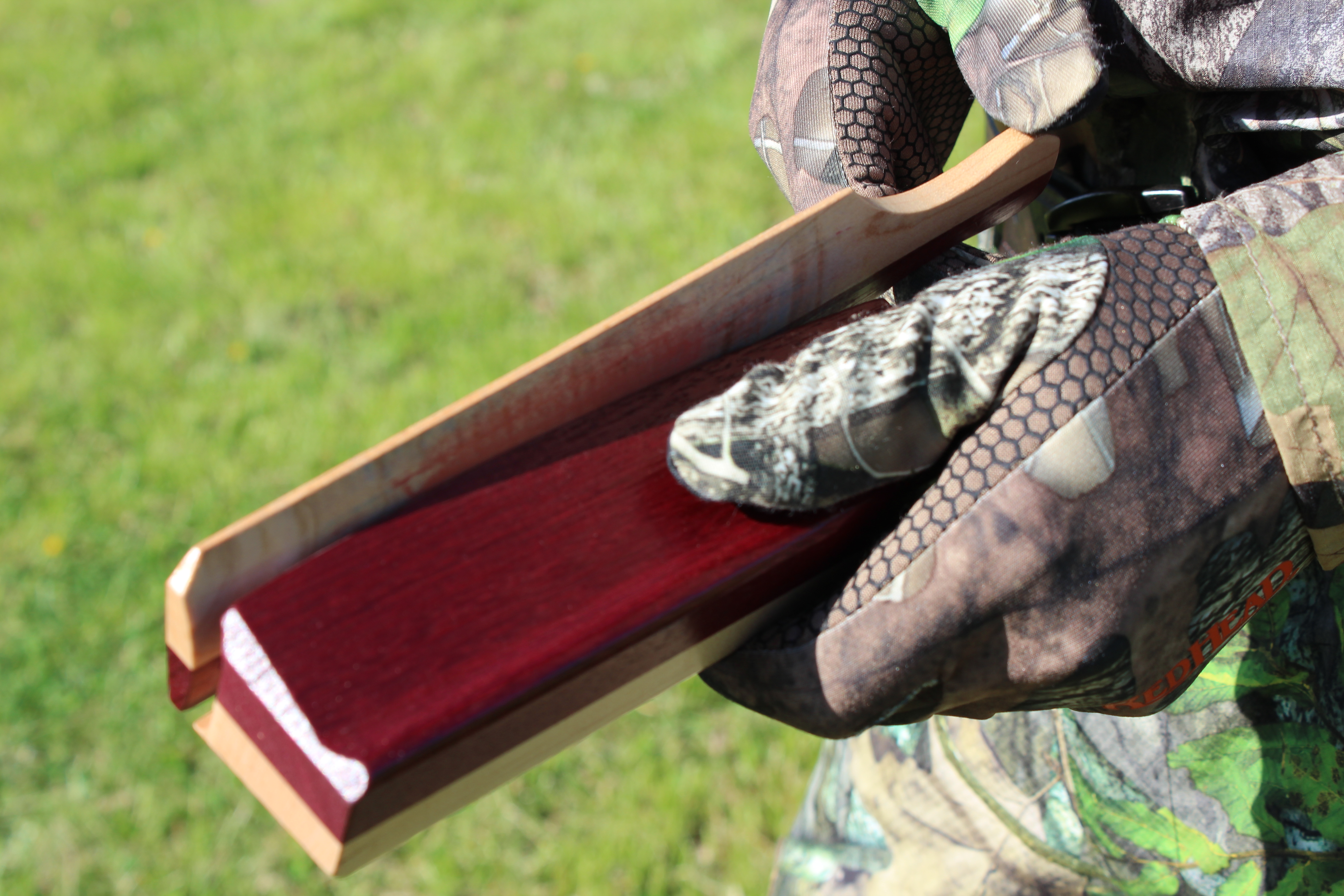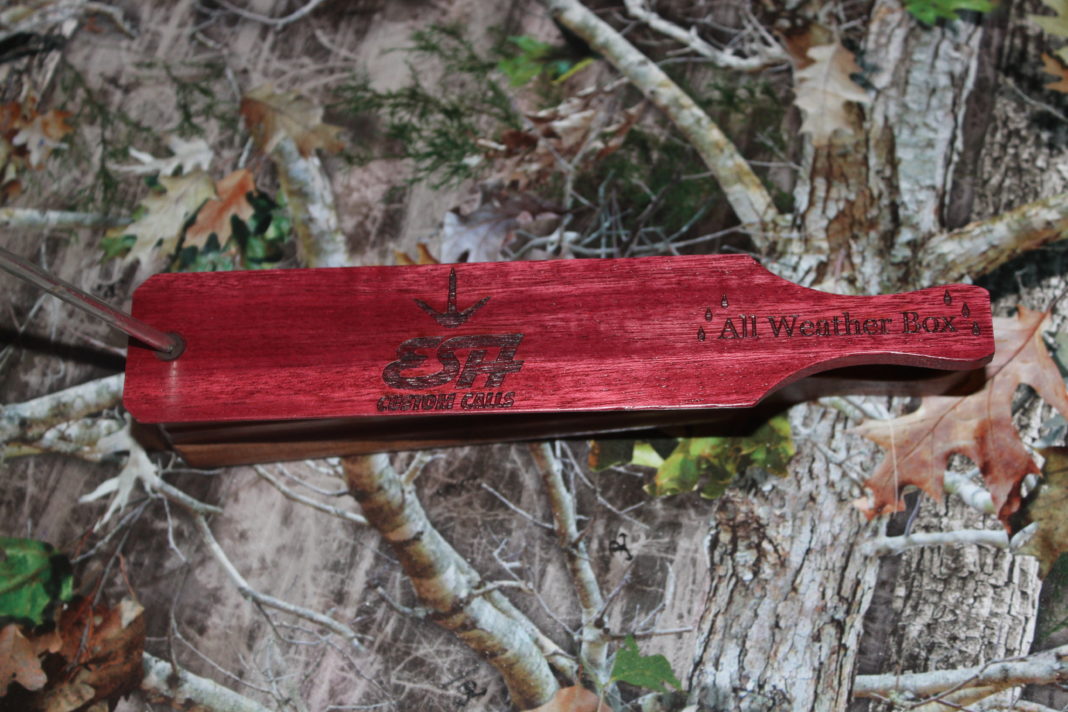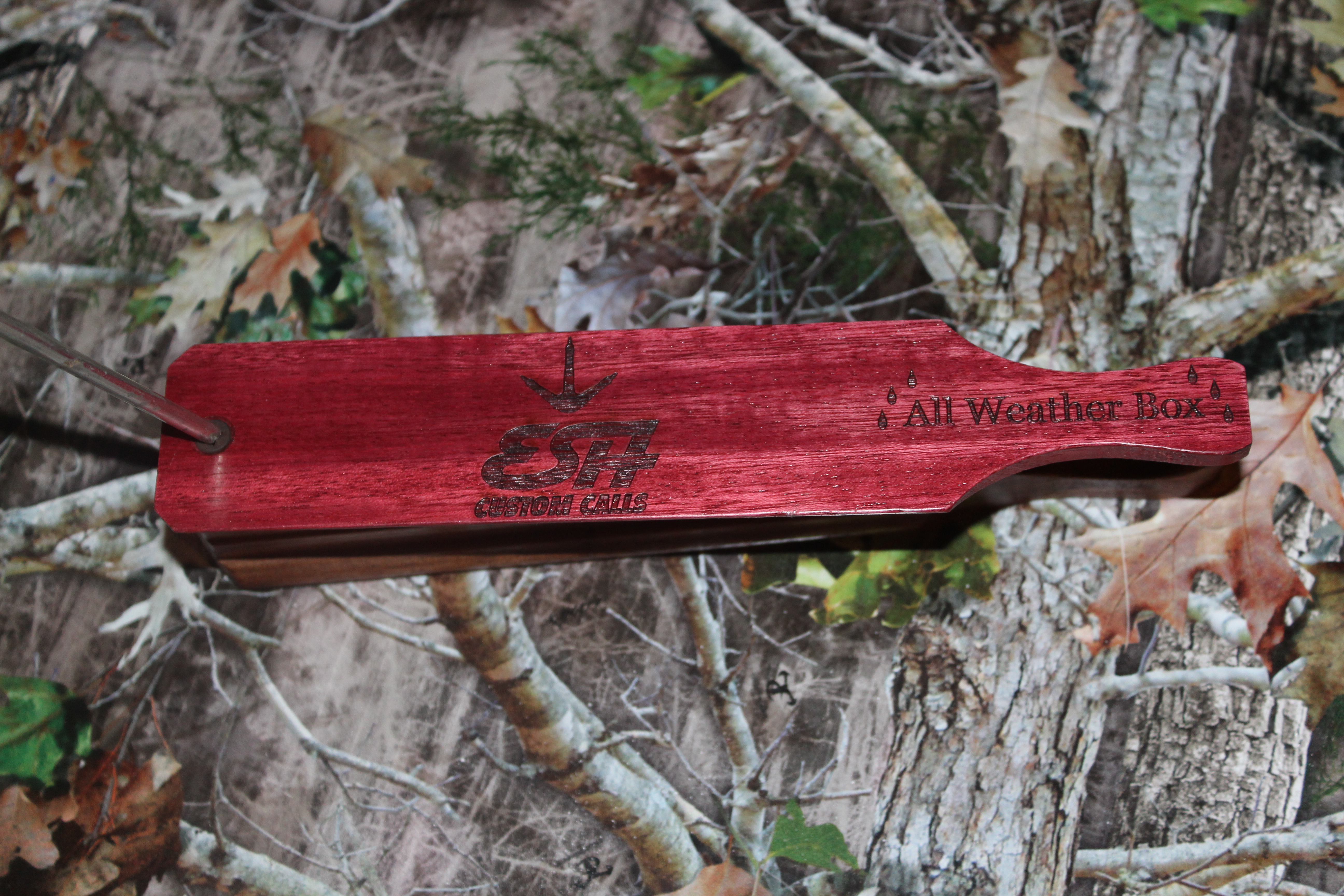Turkey season is fast approaching, and hunters are starting to get their equipment in order. After making a few calls with your box call, you realize that it does not sound like it once did. It might be time for a tune-up. Do not get carried away with the tuning as this might ruin the call. A little will go far in the tuning process.
Step 1: The first step is cleaning the call. It is very important that you do not use sandpaper on any part of the call. By using sandpaper, all you will end up doing is removing wood from the call that is required for the sound you desire. Instead, use a wash rag or soft sponge that is used to prevent scratches when washing pots and pans. At this point, all you are trying to accomplish is to remove any dirt or oil left by your hands, as well as any old chalk that needs to be removed. This all needs to be done while the wood of the call is left the size as it begun.
Step 2: After you have removed the dirt, oil and old chalk from the call, the next thing to do is add a new layer of chalk on the paddle. Chalk that is designed for turkey calls can be bought wherever turkey calls are sold. Stay away from chalks that contain oil, like blackboard chalk.
Step 3: Now it is time to give the call a test run. Chances are the cleaning and the new layer of chalk was all that was needed, and nothing more needs to be done. Listen for the tone that you prefer. If you find shiny spots on the paddles underside, you did not get the call clean enough. Take the sponge back to that spot, and then add more chalk until you hear the sound you desire.
Step 4: After you have cleaned and chalked your call, and you are still not satisfied you might have to adjust the screw on the lid of the call. Do this only as a last-ditch effort to correct the problem. Most calls come from the factory with the screw exactly where it is supposed to be. All you are trying to do at this point is to get the screw where it should be if it has happened to move on you. Do not turn the screw too much. Start with a quarter turn, and then try the call again. If the call is still not what you want, repeat the process. Never turn the screw more than a quarter turn. If you tighten the screw past the original position (you should be able to feel it), back the screw off.

Properly maintaining a box call does not require a lot of work. But the little effort you put into keeping the call in good working order will pay off for seasons to come.



















![The Best Deer Camp Chili [VIDEO] Deer Chili Ingredients, Tomatoes, Chili Spices](/wp-content/uploads/2015/10/Deer-Chili-Deer-Camp-Recipe-218x150.jpg)
![How to Call Elk Early in the Season [VIDEO]](/wp-content/uploads/2016/08/byers003-218x150.jpg)






![Idiots Disturb Hunter: How Would You Have Handled It? [VIDEO]](/wp-content/uploads/2015/10/DSC00110-e1474487693878-100x70.jpg)
![Albino Buck Shocked to Shed His Antlers [VIDEO]](/wp-content/uploads/2015/10/AlbinoDeer-100x70.jpg)